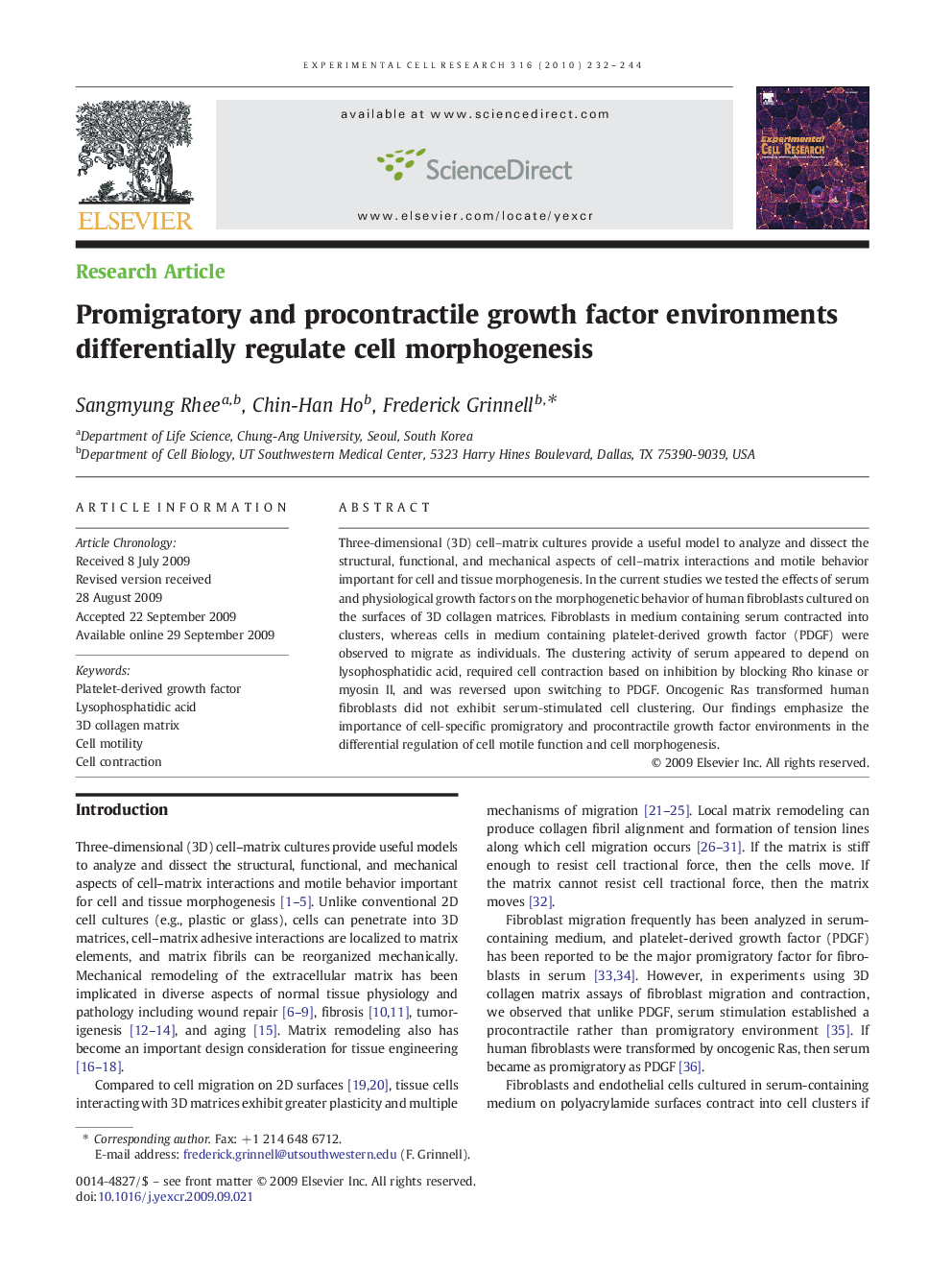| Article ID | Journal | Published Year | Pages | File Type |
|---|---|---|---|---|
| 2131356 | Experimental Cell Research | 2010 | 13 Pages |
Three-dimensional (3D) cell–matrix cultures provide a useful model to analyze and dissect the structural, functional, and mechanical aspects of cell–matrix interactions and motile behavior important for cell and tissue morphogenesis. In the current studies we tested the effects of serum and physiological growth factors on the morphogenetic behavior of human fibroblasts cultured on the surfaces of 3D collagen matrices. Fibroblasts in medium containing serum contracted into clusters, whereas cells in medium containing platelet-derived growth factor (PDGF) were observed to migrate as individuals. The clustering activity of serum appeared to depend on lysophosphatidic acid, required cell contraction based on inhibition by blocking Rho kinase or myosin II, and was reversed upon switching to PDGF. Oncogenic Ras transformed human fibroblasts did not exhibit serum-stimulated cell clustering. Our findings emphasize the importance of cell-specific promigratory and procontractile growth factor environments in the differential regulation of cell motile function and cell morphogenesis.
